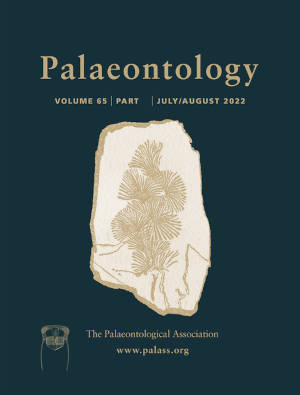Article: Ontogeny and evolution of the elasmosaurid neck highlight greater diversity of Antarctic plesiosaurians
Publication: Palaeontology
Volume:
65
Part:
2
Publication Date:
2022
Article number:
e12593
Author(s):
Arthur S. Brum, Tiago R. Simões, Geovane A. Souza, André E. P. Pinheiro, Rodrigo G. Figueiredo, Michael W. Caldwell, Juliana M. Sayão, and Alexander W. A. Kellner
Abstract
Abstract The Antarctic plesiosaurian record is critical for understanding the evolution of elasmosaurids in the southern hemisphere. Elasmosaurids exhibit some of the most remarkable modifications of the vertebrate axial skeleton given their extreme elongation of the cervical region. Despite a considerable amount of information available on vertebral counts within Plesiosauria throughout the decades, we have a considerably more limited understanding of the diversity of cervical vertebral shapes in elasmosaurids and how these have changed throughout ontogeny and phylogeny. Here, we compile the largest known morphometric dataset on elasmosaurid cervical vertebrae, including data on juveniles and adults, to answer some of those long-standing questions. This dataset also includes newly recovered materials from Antarctica, which we describe herein. Using multivariate statistical approaches, we find that the two major elasmosaurid cervical morphotypes, the elasmosaurine anteroposteriorly elongate (can-shaped) and the aristonectine anteroposteriorly short and dorsoventrally tall (disc-like), evolved towards opposite regions of the morphospace from the plesiomorphic ‘Cimoliasaurus’-grade condition. We also find a marked ontogenetic shift from the disc-like to can-shaped morphology, which is especially pronounced in elasmosaurines but more limited in aristonectines. Furthermore, we find that juvenile aristonectines occupy a specific region of the vertebral morphospace, distinct from any other group or ontogenetic stage, thus suggesting that reversal to the ‘short-necked’ condition in elasmosaurids is mostly characterized by ontogenetic predisplacement in aristonectines. Finally, we find that it is possible to discriminate between vertebral shapes of distinct taxonomic groups regardless of ontogenetic stage, and that the diversity of Antarctic elasmosaurids was greater than previously recognized.
